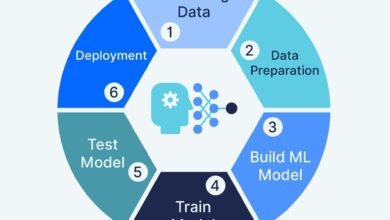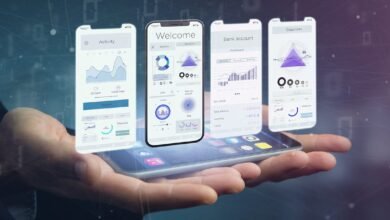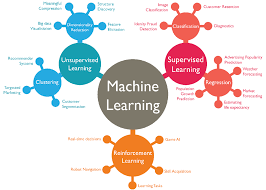
The digital landscape has undergone a revolutionary transformation with the emergence of ChatGPT and large language models (LLMs), fundamentally changing how we interact with artificial intelligence. These sophisticated AI systems have moved from research laboratories into mainstream applications, empowering millions of users worldwide to enhance productivity, creativity, and problem-solving capabilities. Large language models represent a breakthrough in natural language processing, enabling machines to understand context, generate human-like text, and assist with complex tasks across various domains.
ChatGPT, developed by OpenAI, stands as one of the most prominent examples of conversational AI technology that has captured global attention. This AI chatbot leverages advanced machine learning algorithms trained on vast datasets to provide intelligent responses, complete tasks, and engage in meaningful dialogue with users. Whether you’re a student seeking homework assistance, a professional drafting emails, a developer writing code, or a creative writer brainstorming ideas, learning how to effectively use ChatGPT and large language models has become an essential digital literacy skill.
This comprehensive user guide explores the intricate world of large language models, demystifying their functionality and providing practical strategies for maximizing their potential. From the underlying transformer architecture to mastering prompt engineering techniques, this article equips you with the knowledge needed to harness these powerful tools effectively. We’ll examine various LLM applications, discuss the differences between models like GPT-3.5 and GPT-4, explore advanced features, and address important considerations regarding limitations, ethical usage, and data privacy.
As artificial intelligence continues to evolve, staying informed about ChatGPT capabilities and large language model technology ensures you remain competitive in an increasingly AI-driven world. This guide serves as your roadmap to accessing and leveraging these transformative technologies for personal and professional growth, while navigating the responsible use of generative AI systems in everyday applications.
Large Language Models (LLMs)
Large language models are sophisticated artificial intelligence systems designed to process and generate human language with remarkable accuracy. At their core, LLMs utilize deep learning techniques, specifically transformer architecture, to analyze patterns within massive text datasets comprising billions of words from books, websites, articles, and other sources. This extensive training enables these AI models to understand context, semantics, grammar, and even nuanced linguistic subtleties.
The fundamental principle behind large language models involves predicting the most probable next word in a sequence based on the preceding context. Through this seemingly simple mechanism, LLMs develop an impressive ability to generate coherent paragraphs, answer questions, translate languages, summarize content, and perform various natural language processing tasks. The “large” designation refers to the billions of parameters these models contain—numerical values that determine how the model processes information and makes predictions.
ChatGPT represents a specific implementation of large language model technology, fine-tuned through reinforcement learning from human feedback (RLHF). This additional training phase teaches the model to provide helpful, accurate, and safe responses aligned with user intentions. Unlike traditional search engines that return links to websites, ChatGPT synthesizes information and presents direct answers in conversational format, making complex information more accessible.
The development of LLMs has progressed through several generations, with each iteration demonstrating enhanced capabilities. GPT-3, released in 2020, contained 175 billion parameters and showcased impressive language generation abilities. GPT-4, launched in 2023, further advanced these capabilities with improved reasoning, reduced errors, and multimodal functionality, allowing it to process both text and images. These technological foundations help users appreciate the capabilities and limitations of ChatGPT and large language models in practical applications.
Getting Started with ChatGPT

Beginning your journey with ChatGPT requires minimal technical knowledge, making this powerful AI tool accessible to users of all skill levels. The first step involves visiting the OpenAI website and creating a free account using an email address or existing Google, Microsoft, or Apple credentials. Once registered, you’ll gain immediate access to the ChatGPT interface, where you can start conversations with the AI chatbot through a simple text input box.
The free tier provides access to GPT-3.5, which offers robust language and generation capabilities suitable for most everyday tasks. For users seeking enhanced performance, a ChatGPT Plus subscription unlocks GPT-4, featuring superior reasoning abilities, longer context windows, and access during peak usage times. ChatGPT Plus also includes additional features such as custom instructions, plugin support, and priority access to new features, making it valuable for power users and professionals.
When initiating your first conversation with ChatGPT, clarity is paramount. The AI model responds based on the information you provide, so detailed, specific queries yield better results than vague questions. For example, instead of asking “Write about dogs,” a more effective prompt would be “Write a 300-word article about the benefits of adopting rescue dogs, including health advantages and emotional rewards.” This specificity guides the large language model toward producing content that matches your exact requirements.
The ChatGPT interface supports continuous conversations, maintaining context throughout your session. This conversational memory allows you to build upon previous exchanges, request modifications, or explore topics in greater depth without repeating background information. You can also start multiple conversation threads, organizing different projects or topics separately. These fundamental features establish a solid foundation for leveraging ChatGPT’s capabilities effectively.
Essential Features and Capabilities
- ChatGPT offers an extensive array of features that extend far beyond simple question-answering, positioning it as a versatile AI assistant for diverse applications. The platform’s text generation capabilities enable users to create articles, essays, stories, poems, and other written content across various styles and tones. Whether you need formal business communication or casual creative writing, ChatGPT adapts to your specified requirements through appropriate prompt engineering.
- Code generation represents another powerful capability, with ChatGPT proficiently writing, debugging, and explaining programming code across multiple languages, including Python, JavaScript, Java, C++, and more. Developers leverage this feature for rapid prototyping, learning new programming concepts, troubleshooting errors, and optimizing existing code. The AI model can explain complex algorithms in plain language, making technical concepts accessible to learners at different skill levels.
- Language translation functionality allows ChatGPT to convert text between numerous languages while preserving meaning and context. This feature proves invaluable for international communication, content localization, and language learning. The large language model goes beyond literal translation, considering cultural nuances and idiomatic expressions to produce more natural-sounding output in the target language.
- Summarization and analysis capabilities enable users to distill lengthy documents, articles, or conversations into concise summaries highlighting key points. ChatGPT can analyze sentiment, extract main themes, identify important information, and present findings in various formats, including bullet points, paragraphs, or structured outlines. These features significantly enhance productivity by reducing the time required to process large volumes of information, making ChatGPT an essential tool for research, business intelligence, and content curation.
Mastering Prompt Engineering
Prompt engineering represents the art and science of crafting effective inputs that elicit optimal responses from ChatGPT and large language models. The quality of your prompts directly influences the usefulness of the AI’s output, making this skill essential for maximizing the value of LLM interactions. Effective prompts contain clear instructions, relevant context, specific requirements, and desired output formats, guiding the language model toward producing precisely what you need.
The structure of effective prompts typically follows a pattern: context provision, task specification, format requirements, and constraints. For instance, “You are an expert marketing consultant. Analyze this product description and suggest three improvements to increase customer engagement. Present your suggestions in numbered list format with brief explanations.” This prompt establishes the AI’s role, defines the task, specifies the output format, and sets clear expectations.
Few-shot learning enhances prompt effectiveness by providing examples within your request. When you include sample inputs and desired outputs, ChatGPT better understands your requirements and replicates the pattern. For creative tasks, showing examples of tone, style, or structure helps the language model match your vision more accurately. This technique proves particularly valuable for specialized or uncommon tasks where the AI might otherwise struggle to interpret your intentions correctly.
Advanced prompt engineering techniques include chain-of-thought prompting, where you instruct ChatGPT to explain its reasoning step-by-step before providing answers. This approach improves accuracy for complex problems requiring logical reasoning or multi-step solutions. You can also use role prompts, asking the AI to adopt specific personas or expertise levels, temperature adjustments for creativity control, and system messages for establishing behavioral guidelines throughout conversations, ultimately optimizing ChatGPT’s performance for your specific use cases.
ChatGPT vs. Other Large Language Models
The large language model landscape includes various competing platforms, each offering distinct features, strengths, and limitations. ChatGPT maintains a leading position due to its extensive training, user-friendly interface, and continuous improvements, but alternatives help users select the most appropriate AI tool for specific requirements. Google’s Gemini (formerly Bard), Anthropic’s Claude, Microsoft’s Copilot, and Meta’s LLaMA represent significant competitors with unique characteristics.
- Google Gemini leverages Google’s vast search index and infrastructure, providing real-time internet access and integration with Google’s ecosystem of products. This connectivity enables Gemini to retrieve current information and verify facts against recent sources, addressing one limitation of ChatGPT’s training data cutoff. Gemini also offers multimodal capabilities, processing images alongside text, making it suitable for visual analysis tasks and comprehensive research requiring diverse information sources.
- Anthropic’s Claude emphasizes safety, accuracy, and helpful behavior through Constitutional AI training methods. Claude typically produces longer, more detailed responses and demonstrates strong performance in reasoning tasks, code analysis, and document processing. The model’s extended context window allows it to handle longer inputs, beneficial for analyzing extensive documents or maintaining coherent conversations across many exchanges. Users often praise Claude for nuanced and thoughtful responses.
- Microsoft Copilot integrates GPT-4 technology within Microsoft’s ecosystem, offering seamless connectivity with Office applications, Edge browser, and Windows systems. This integration enables Copilot to assist with document creation, data analysis in Excel, presentation design, and web research while maintaining conversation context. The platform combines large language model capabilities with practical workplace tools, creating a comprehensive AI assistant for productivity-focused users. Evaluating these options based on your specific needs, privacy preferences, and integration requirements ensures you select the optimal LLM platform for your applications.
Practical Applications Across Industries
ChatGPT and large language models have revolutionized workflows across numerous industries, demonstrating versatility that extends from creative fields to technical domains. In content creation and marketing, professionals utilize ChatGPT for generating blog posts, social media content, email campaigns, product descriptions, and advertising copy. The AI tool accelerates brainstorming sessions, overcomes writer’s block, and produces multiple content variations for A/B testing, significantly enhancing marketing efficiency and creativity.
Education and learning represent another domain profoundly impacted by large language models. Students leverage ChatGPT as a study companion, receiving explanations of complex concepts, practice problems with solutions, essay feedback, and personalized learning resources. Educators create lesson plans, assessment questions, and educational materials more efficiently. The AI assistant provides 24/7 tutoring capabilities, adapting explanations to individual learning styles and pacing, democratizing access to quality educational support.
Software development and programming benefit enormously from ChatGPT’s code generation and debugging capabilities. Developers use the AI model for writing boilerplate code, explaining unfamiliar syntax, suggesting optimization strategies, generating documentation, and troubleshooting errors. The language model supports rapid prototyping, learning new frameworks, and maintaining legacy codebases by explaining outdated code. This assistance accelerates development cycles and reduces the cognitive load associated with routine programming tasks.
Business operations and customer service increasingly incorporate LLM technology for automating responses, analyzing customer feedback, generating reports, drafting communications, and supporting decision-making processes. ChatGPT helps businesses scale customer support operations, maintain consistent communication standards, and extract actionable insights from data. Healthcare professionals use AI assistants for medical documentation, research summarization, and patient education materials, while legal professionals leverage LLMs for contract review, legal research, and document drafting, demonstrating the transformative impact of artificial intelligence across professional sectors.
Advanced Techniques and Best Practices

Maximizing ChatGPT’s effectiveness requires advanced techniques that elevate basic interactions into sophisticated workflows. Iterative refinement represents a crucial strategy where you progressively improve outputs through follow-up prompts. Rather than expecting perfect results from initial queries, treat conversations as collaborative processes. Request modifications, clarifications, or alternative approaches, building toward optimal outcomes through multiple exchanges that leverage the AI’s conversational memory.
- Custom instructions in ChatGPT Plus allow you to establish persistent preferences that apply across all conversations. These instructions can specify your background, preferred response formats, expertise level, tone preferences, and recurring requirements. Setting custom instructions eliminates repetitive explanations and ensures consistent output quality aligned with your needs. For example, developers might specify preferred programming languages and documentation styles, while writers might define tone, audience, and formatting preferences.
- Fact-checking and verification constitute essential practices when working with large language models. While ChatGPT demonstrates impressive knowledge, it can occasionally produce inaccurate information or “hallucinate” facts that sound plausible but are incorrect. Always verify critical information, especially for medical, legal, financial, or technical decisions. Cross-reference AI-generated content with authoritative sources, use multiple queries to check consistency, and maintain healthy skepticism regarding claims requiring factual accuracy.
- Combining multiple tools enhances overall productivity by leveraging each AI platform’s strengths. Use ChatGPT for drafting and brainstorming, specialized tools for fact-checking, and human expertise for final review and critical judgment. Integrate LLM outputs into broader workflows rather than treating them as standalone solutions. Develop systematic approaches for quality control, including peer review, automated checks, and iterative improvements. These advanced techniques and best practices transform ChatGPT from a novelty into a powerful productivity multiplier integrated seamlessly into professional workflows.
Limitations and Ethical Considerations
Despite their impressive capabilities, ChatGPT and large language models possess inherent limitations that users must understand for responsible deployment. Knowledge cutoff dates mean that ChatGPT lacks information about events occurring after its training data collection ended, potentially providing outdated information for rapidly evolving topics. The model cannot access real-time data, browse the internet (in base versions), or update its knowledge automatically, requiring users to supplement AI responses with current sources when recency matters.
- Bias and fairness concerns arise because large language models learn from internet text reflecting existing societal biases, stereotypes, and inequalities. While developers implement safeguards and fine-tune to mitigate harmful outputs, LLMs may occasionally produce biased responses regarding race, gender, religion, or other sensitive topics. Users should critically evaluate AI-generated content for potential biases, especially when creating materials affecting diverse audiences or making consequential decisions.
- Accuracy and hallucination represent significant challenges where ChatGPT confidently presents incorrect information that superficially appears credible. The language model prioritizes coherent text generation over factual accuracy, sometimes fabricating sources, statistics, or technical details. This limitation proves particularly problematic in specialized domains requiring precision, such as medical advice, legal interpretation, or scientific research. Users must implement verification processes and avoid blind reliance on AI outputs for critical applications.
- Ethical usage and data privacy considerations demand careful attention. Users should respect intellectual property rights, avoid plagiarism by properly attributing and transforming AI-generated content, and consider privacy implications when sharing sensitive information with ChatGPT. Organizations must establish clear AI usage policies addressing acceptable applications, quality standards, data handling procedures, and disclosure requirements. Responsible LLM deployment balances technological benefits with ethical obligations, transparency about AI involvement, and commitment to human oversight for consequential decisions.
Future Trends in Large Language Models
The trajectory of large language model development points toward increasingly sophisticated capabilities that will further transform human-computer interaction. Multimodal AI systems represent the next frontier, combining text, image, audio, and video processing within unified models. Future iterations of ChatGPT and competing LLMs will seamlessly analyze visual content, generate images from descriptions, process audio inputs, and create multimedia outputs, enabling richer and more versatile applications across creative and professional domains.
- Personalization and adaptive learning will enhance LLM effectiveness by enabling models to learn individual user preferences, communication styles, and specific domain knowledge over time. Future AI assistants will maintain persistent memory across sessions, building a comprehensive record of user contexts, projects, and goals. This evolution will create truly personalized AI companions that adapt to individual needs while maintaining privacy protections and user control over data retention.
- Improved reasoning and reliability remain critical development priorities as researchers work to reduce hallucinations, enhance logical consistency, and strengthen factual accuracy. Techniques like retrieval-augmented generation combine large language models with real-time information access, grounding responses in verified sources. Advances in AI alignment research focus on ensuring LLM behavior remains beneficial, truthful, and aligned with human values, addressing current limitations and building trust in AI systems.
- Specialized domain models will proliferate, offering expertise optimized for specific industries, professions, or applications. Healthcare LLMs trained on medical literature, legal models fine-tuned on case law and regulations, and scientific AI assistants specialized in research methodologies will provide deeper expertise than general-purpose models. The democratization of AI development through open-source initiatives, accessible training tools, and lower computational requirements will enable broader participation in LLM innovation, fostering diverse applications and accelerating technological progress in artificial intelligence.
More Read: The Future of Natural Language Processing Technology
Conclusion
ChatGPT and large language models have fundamentally transformed how we interact with information, create content, solve problems, and enhance productivity across countless applications. This comprehensive user guide has explored the technological foundations, practical applications, effective techniques, and important considerations for leveraging these powerful AI tools responsibly and effectively.
From the underlying transformer architecture to mastering prompt engineering, recognizing limitations, and anticipating future developments, you now possess the knowledge needed to harness LLM capabilities in personal and professional contexts. As artificial intelligence continues evolving, staying informed about ChatGPT features, ethical usage, and emerging trends ensures you remain at the forefront of this technological revolution, maximizing benefits while navigating challenges thoughtfully and responsibly.











